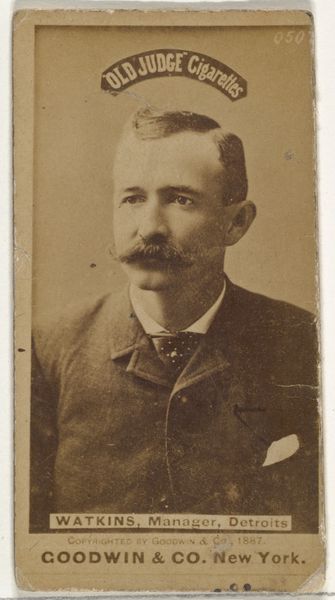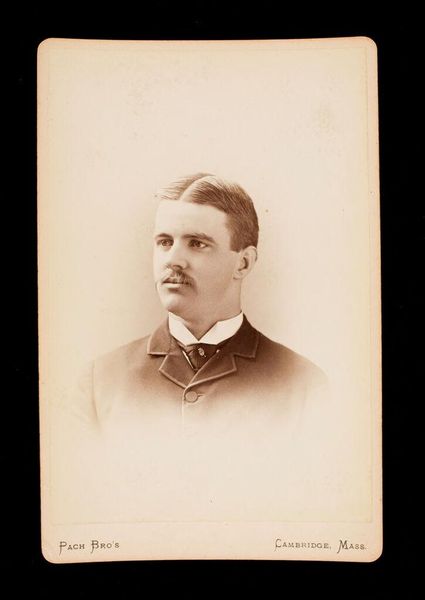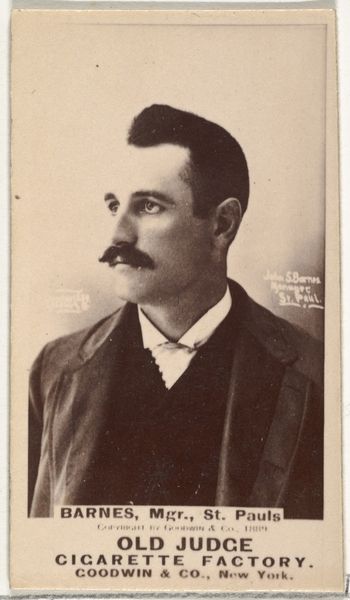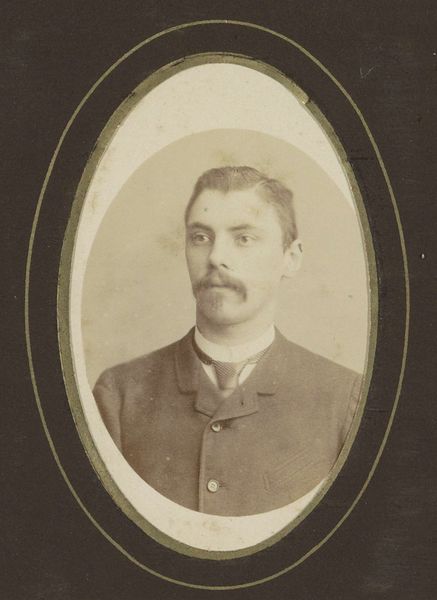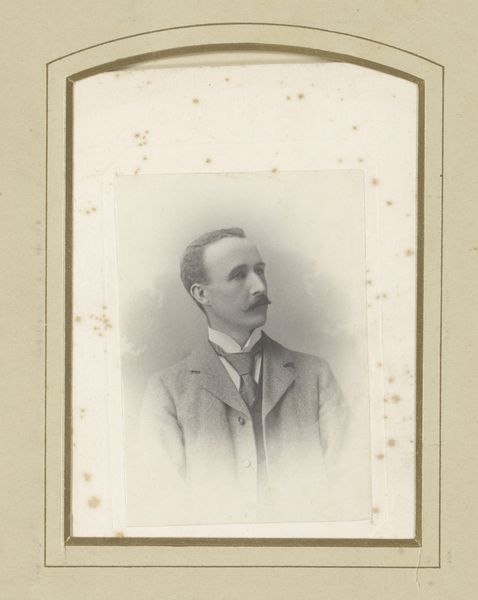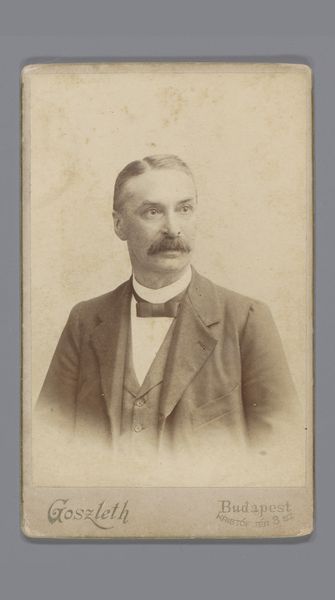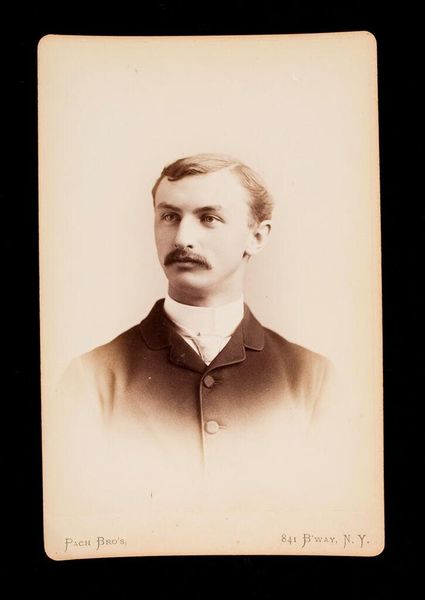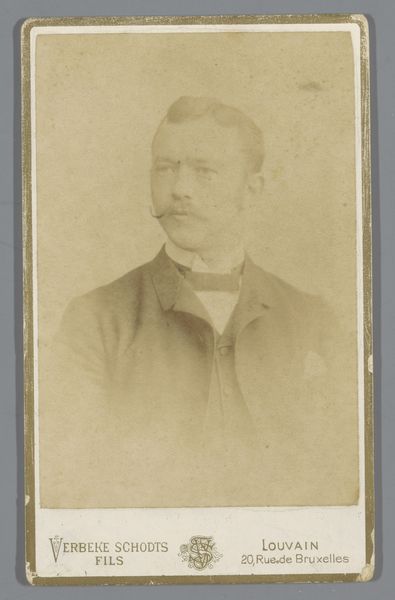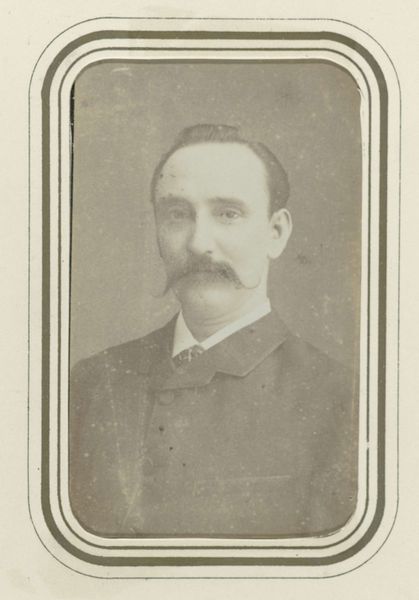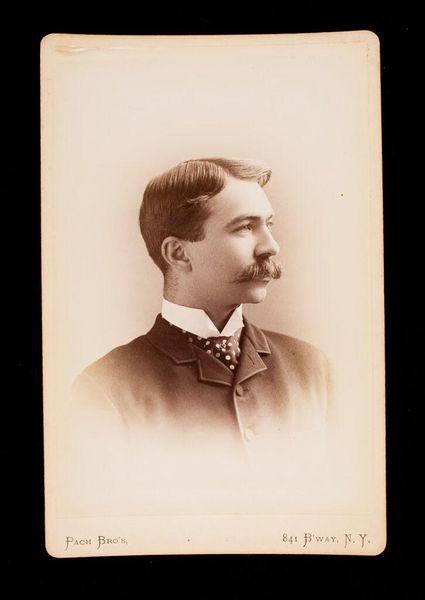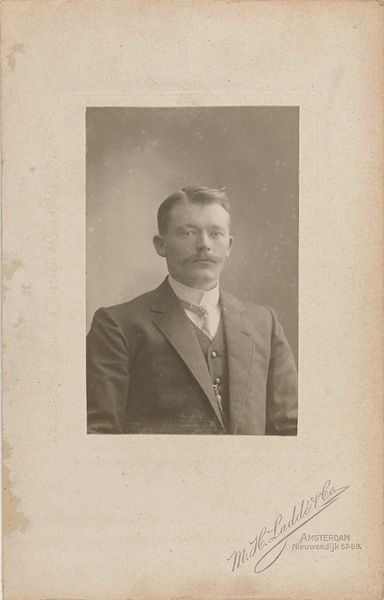
Barnie, Manager, Baltimore Orioles, from the Old Judge series (N172) for Old Judge Cigarettes 1888
0:00
0:00
print, photography, albumen-print
#
portrait
# print
#
impressionism
#
baseball
#
photography
#
historical photography
#
19th century
#
men
#
albumen-print
Dimensions: sheet: 2 11/16 x 1 3/8 in. (6.9 x 3.5 cm)
Copyright: Public Domain
Curator: This albumen print, dating back to 1888, features Barnie, the manager of the Baltimore Orioles baseball team. It’s part of the Old Judge series of baseball cards produced by Goodwin & Company. The photographic process yields a sepia-toned portrait, typical of the era. Editor: There's something instantly appealing in the composition – the way the soft tones almost flatten the image into a two-dimensional space. Yet the subject, with his distinctive mustache, retains a certain gravity. Curator: Absolutely. Albumen prints like this were produced by coating paper with egg white and then a silver nitrate solution, making them significantly sharper than earlier photographic prints. Goodwin & Company distributed these cards with their Old Judge cigarettes, fueling a booming trade and cementing baseball’s cultural importance. We must also recognize the means of labor required to print each of these. Editor: Thinking about it as a commercial object makes it intriguing. But focusing on the image itself, consider the subtle play of light and shadow, especially on Barnie's face. It almost borders on Impressionistic. You'll notice the composition’s use of verticals and horizontals; it's a stable, dependable, structured composition mirroring its subject. Curator: I agree about its impact as an image. However, its context as a mass-produced item inextricably links it to industry and commerce of the late 19th century. The commodification of leisure, represented by baseball and cigarettes, played a crucial role in constructing modern consumer culture. How does labor, materiality, and consumption impact how we read its "intrinsic" qualities? Editor: An astute point. Perhaps what strikes me as aesthetic harmony is actually a reflection of societal values and capitalist motivations being visually played out? Curator: Precisely. This baseball card represents a synergy of photographic technique and advertising strategy. The intersection reveals as much about social and labor practices, as the baseball manager it depicts. Editor: The formal elegance I see is inseparable from these wider socio-economic factors at play. Thank you for broadening my perspective, shifting away from an internal art interpretation toward something grounded in material and cultural concerns.
Comments
No comments
Be the first to comment and join the conversation on the ultimate creative platform.

